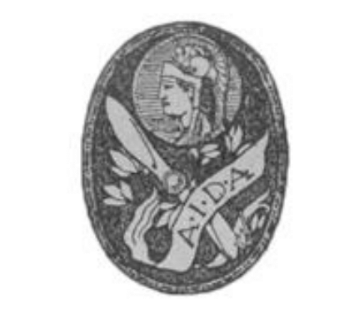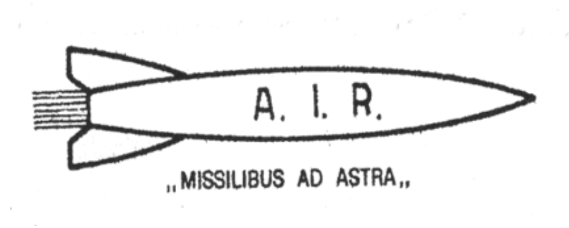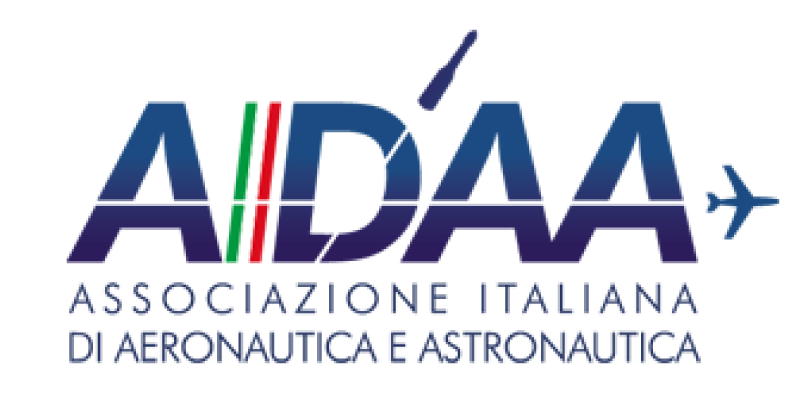Foundation
A.I.D.A.A. was founded in Rome on July 2, 1920 as Associazione Italiana di Aerotecnica and has played a part in historical and technical evolutions in the Italian aerospace sector through the years, from 1920 to 2020.
It is a long period, marked by significant political and social change, two world wars and social transformations impacting on all sectors of aeronautics, from civil to military, and aerospace. At the end of World War One the situation in Italy was hard. Poverty and unemployment was very high and the aviation sector, which had developed significantly during the war, declined.
To avoid losing what had been achieved, some of the most important Italian experts, technicians and scientists working in aerotechnics believed that founding a scientific association designed to promote and disseminate aeronautical research was the most suitable way of reviving and reorganising this important sector.
On June 29 1920, Ten Gen. Mario Moris (one of the founders of the Italian Air Force, together with Giulio Douhet), Professor Luigi Palazzo (geologist and meteorologist, creator of the national meteorological network) and Professor Vito Volterra (mathematician, one of the main founders of functional analysis and creator of helium for airships, as an alternative to hydrogen, then vice-president of the Accademia dei Lincei) sent a circular convocation letter, for the following Friday July 2nd, to the most committed Italian aeronautical researchers and technicians, inviting them to attend a first preliminary assembly at Aero Club, Rome, to lay the foundations for the association. These included experts who left their mark on Italian aeronautical history: Umberto Nobile, Rodolfo Verduzio, Giulio Costanzi, Giuseppe Albenga, Ottavio Ricaldoni, Gaetano A. Crocco, Anastasio Anastasi, Modesto Panetti and many others.
On July 2nd 1920, in Rome, these experts came together to found A.I.D.A. – Associazione Italiana di Aerotecnica – electing Gen. Moris as president for the 1920-21 two-year period.
First logo of A.I.D.A

Early 90's
Multiple A.I.D.A. sections were immediately set up throughout the country. Other initiatives by the new association were the creation of its own scientific journal, L’Aerotecnica, and the organization of congresses still active today in promoting the best of national aerospace scientific production.
The first national congress took place in 1925 in Rome, at Palazzo della Sapienza della Regia Università, with Col. Umberto Nobile presenting a work entitled Il Volo transpolare (The Transpolar Flight), the Amundsen/Nobile exploration project with the Italian airship Norge N1, the first to fly over the North Pole.
Work continued during the Fascist period and, to a limited extent, also during World War Two. Under the influence of Fascism’s autarchy policies, A.I.D.A. was made a federate body of the Reale Aero Club of Italy and Professor Gaetano Arturo Crocco was appointed Extraordinary Commissioner, a position he held until 1945.
The death and destruction World War Two left in its wake reduced Italy to a much worse state than the first had, with widespread unemployment and misery. But the response was very incisive, the will to recover quickly strong and economic boom subsequently brought recovery to all sectors, including aviation.
Parallel changes took place within the association, where university professors, designers and experts, working within their organizations, contributed their ideas and studies to national recovery in the association’s various sections. These included: Ermanno Bazzocchi, Stelio Frati, Francesco Macchi, Bruno Finziand Ermenegildo Preti in Milan; Giuseppe Gabrielli and Antonio Capetti in Turin; Luigi Broglio, Antonio Eula, Antonio Ferri in Rome; Alberto Faraboschi in Genoa; Cesare Cremona, Luigi Pascale in Naples; Enrico Pistolesi, Lucio Lazzarino in Pisa and many other, perhaps less well known, but equally significant individuals.
This is the period in which the missile and space sector was founded and developed. The space race between the two great powers, the Soviet Union and the United States, leading to the launch of the first scientific satellites, is well-known. This interest in the space sector could not fail to be felt even within the A.I.D.A. and thus some of its members decided to found a new association, focusing exclusively on missiles and astronauts. On June 6, 1951, A.I.R., Associazione Italiana Razzi was founded at Accademia dei Lincei in Rome.
A.I.R's logo

From A.I.R. to A.I.D.A.A.
The new body set to work right away, founding its own magazine, Missili e Spazio (Missiles and Space), and organizing several national and international congresses, including the 7th Congress of the I.A.F., International Astronautical Federation, founded in 1951, the largest sector association in the world, with 407 members in 71 countries, the principal space agencies, industries, research centres, universities, associations, museums and other institutes, in Rome in 1956.
It was not long-lived; economic problems and conflict with its twin A.I.D.A. convinced most of the members of the two associations to set up a new one to bring together the aeronautics and space sectors.
On June 30, 1969, the two associations officially merged under the name A.I.D.A.A. – Associazione Italiana di Aeronautica e Astronautica (Italian Association of Aeronautics and Astronautics). Prof. Antonio Eula was elected its first president, the person who lived through the association’s history in all its historical and cultural evolutions.
At the same time, their respective scientific dissemination bodies, L’Aerotecnica, A.I.D.A., and Missili e Spazio, A.I.R., were merged into what is still today the only Italian specialist magazine in the sector, l’Aerotecnica Missili e Spazio. Prof. Luigi G. Napolitano, of Naples’s Federico II University, was its first director and the following editorial staff worked with him: Paolo Oliviero, Giovanni D’Elia, Carmine Golia, Giuseppe P. Russo, Antonio Marchese, Gennaro Russo (of the then Institute of Aerodynamics of the Federico II University’s Faculty of Engineering) and Mario Marchetti (of the Aerospace School of Sapienza University in Rome, author of a book commemorating the 100th anniversary of the association “Un Secolo di Storia Aeronautica e Spaziale“).
Prof. Luigi Napolitano and Prof. Paolo Santini of the Sapienza University in Rome promoted the association’s subsequent work, projecting the association’s scenario at the international level and increasingly incorporating it into the two main international associations: the I.A.F. and the I.C.A.S. – International Council of the Aeronautical Sciences a world institution, conceived of as an international forum for professional aeronautical associations), which these two academics frequently presided over.
Thanks to their work, A.I.D.A.A. organized several international congresses: in 1981 the XXXII Congress I.A.F., held in Rome at Sapienza University’s Faculty of Engineering, in 1996 the XX Congress I.C.A.S., under the aegis of Prof. Giovanni M. Carlomagno, and in 1997, in Turin, the XLVIII Congress I.A.F. when Eng. Ernesto Vallerani of Alenia Spazio was president of A.I.D.A.A. Vallerani’s first objective was to broaden A.I.D.A.A.’s relations with the European associations: the French A.A.A.F., the German D.G.L.R. and the English R.Ae.S.. In 1992 A.I.D.A.A. joined the Council of European Aerospace Societies (C.E.A.S.) which brings together the aerospace Associations of the main European nations.
A.I.D.A.A.'s current logo

A.I.D.A.A. today
The Presidency of Vallerani continued for 12 years, from 1991 to 2003, and certainly left its mark and characterised the life of the Association. His successor, who continued along the same route, was Eng. Fausto Cereti from Alitalia, who remained in that position until 2007. Both tried to bring within A.I.D.A.A. increasing numbers of representatives from the industrial world who were experts in current issues essential for the up-dating and direction of research.
After presidents from the world of industry, there came an alternating succession of presidents from the academic world. Prof. Vittorio Giavotto and Prof. Amalia Ercoli Finzi belonging to the Milan Branch, Prof. Franco Persiani of the Emiliano-Romagnola Branch, Prof. Leonardo Lecce from the Naples Branch, and currently Prof. Erasmo Carrera from the Turin Branch.
With all of these, participation and involvement has continued in the international activities of C.E.A.S., I.C.A.S., and I.A.F. and other events. Confirming this tradition is the organization by A.I.D.A.A. of the XXXIV International Congress of I.C.A.S., to be held in Florence in 2024.
A.I.D.A.A. has permanently organized National Congresses on a biennial basis. In its first hundred years, 46 Congresses have been organized: 9 in the A.I.D.A. period from 1920 to 1951, 12 with the foundation of A.I.R.from 1951 to 1969, and 25 from 1970 when A.I.D.A.A. came into being to the present. All the Congresses were held and organized at the Branches distributed throughout the country: Bologna, Milan, Naples, Padua, Palermo-Enna, Pisa, Puglia, Rome, Turin.
In 2020, the Association celebrated with an online congress (due to the COVID-19 pandemic) its 100th anniversary and members took the opportunity to celebrate achievement and excellence within the aeronautics community.
More information about the history of the Association, reflecting the evolution and growth of the Italian aeronautical and space sector, can be found on the article “The history of A.I.D.A.A., the Italian Association of aeronautics and astronautics” (1920-2020), in the book “Un secolo di Storia Aeronautica e Spaziale–AIDAA, Associazione Italiana di Aeronautica e Astronautica” by professor Mario Marchetti and in the presentation by professor Paolo Gasbarri.

